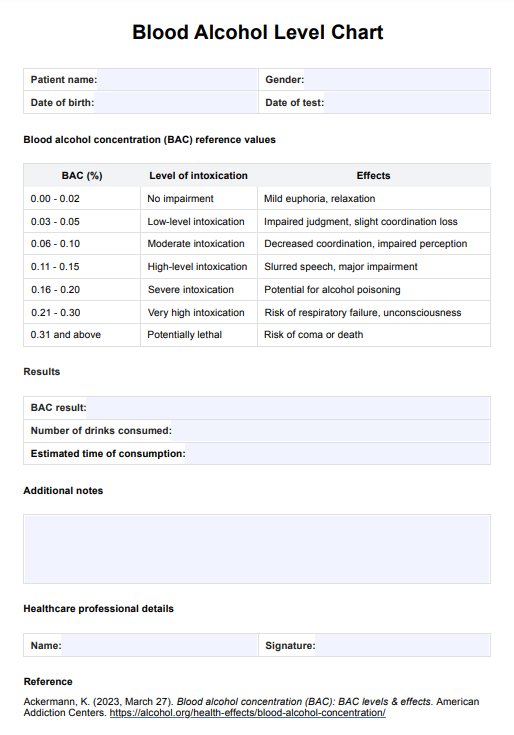Being three times over the legal limit of alcohol refers to a blood alcohol concentration (BAC) that is three times the standard legal threshold for driving. In most places, the legal limit is set at 0.08%. Therefore, three times this limit would result in a BAC of 0.24%.

Blood Alcohol Level Chart
Learn about Blood Alcohol Level Charts to learn about alcohol intoxication levels and use our Blood Alcohol Level Chart template for your work.
Blood Alcohol Level Chart Template
Commonly asked questions
Your blood alcohol content (BAC) after three drinks varies by weight and gender. For example, a 180 lbs male may have a BAC of about 0.063%. This decreases by approximately 0.015% per hour as the body metabolizes alcohol. Individual responses to alcohol can differ significantly. Always drink responsibly.
Blood alcohol concentration (BAC) does indeed lessen over time, but it is important to understand the mechanisms behind this process. The body metabolizes alcohol primarily through the liver, using the enzyme alcohol dehydrogenase. On average, BAC decreases at a rate of approximately 0.015 g/100 mL per hour. This means that for a person with a BAC of 0.08, it would take about 5 to 6 hours to return to zero.
EHR and practice management software
Get started for free
*No credit card required
Free
$0/usd
Unlimited clients
Telehealth
1GB of storage
Client portal text
Automated billing and online payments











